One of the things which often confuses folks about vintage Singers is this whole back-clamping business, so last week when Elsie was faffing about and deciding which Lotus to keep, we realised that a photo opportunity had presented itself and a blog post was called for…
In the top picture we have your usual, common-or-garden, bog-standard vintage Singer presser foot*, which is of the side-clamping type. And below that we have the vintage Singer back-clamp presser foot, about which the only thing that might not be immediately obvious is that in the normal course of events, you don’t go messing with that slotted screw head. The part with the serial number on it and the slanted end stays on the machine. When you want to change the presser foot on a back-clamper, you use the thumbscrew – just like you do on a side-clamper, except it’s in a different place.
Here’s another comparison …
Now you see why none of the usual low-shank vertical needle attachments like buttonholers fit a back-clamping 66, which explains why the back-clamper has its own set of standard attachments like the ruffler, hemmers and whatnot.
Every back-clamping 66 we’ve ever seen has been graced with Lotus decals, which fact is no doubt down to us being in England. If we were in the States, I’m guessing they’d all have had what are called the “Red Eye” decals, which we’ve never actually seen on a real live machine. That’s because as far as I know, all the Lotus decal 66s were made in Scotland and all the Red Eye ones in New Jersey, but as with most things relating to Singer production, I’m by no means certain of that.
Be that as it may, in due course the penny dropped and Singer realised that making just one model of machine with a totally different presser foot clamping system made no sense at all, so they did the obvious and standardised. Exactly when that happened I have no idea, but it’s a fact that all early 66s are back-clampers and all later ones are normal side-clampers.
So how then do we explain the fact that Elsie’s back-clamper 66K is dated 1910 and her side-clamper 66K with the Lotus decals is dated 1909? Easy – her 1909 one’s had its back-clamp presser bar swapped for the side-clamp one from a later 66K! I’ve never done that myself because I don’t see what the problem is with back-clampers, but providing you have a donor side-clamping 66 to hand, I can’t see it being a major undertaking. There’s probably instructions for the conversion on the interweb somewhere, but before you search for those, see if you can find the adaptor which is apparently available by means of which side-clamp attachments can be fitted to a back-clamp Singer. It’s made by somebody in the US.
* Note for those of a pedantic disposition – I do realise that that presser foot’s hinged, therefore it’s not actually your usual, common-or-garden, bog-standard vintage Singer presser foot. But its means of attachment is, so there.
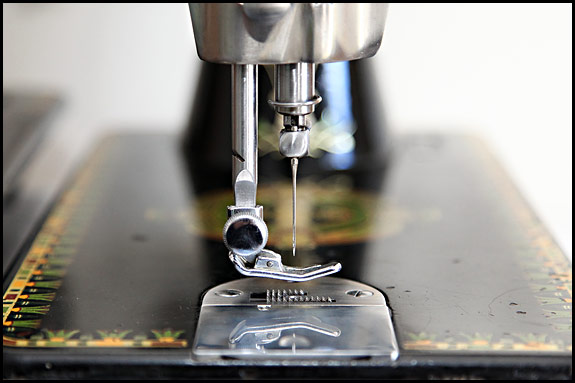
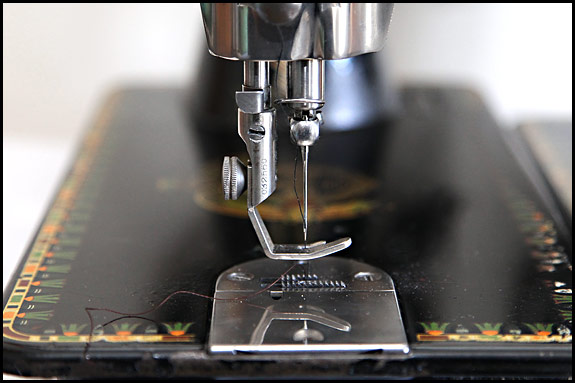
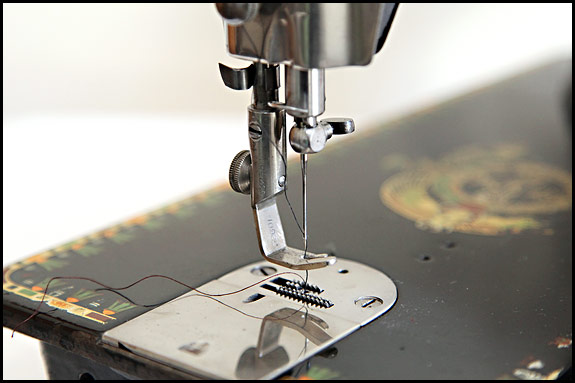
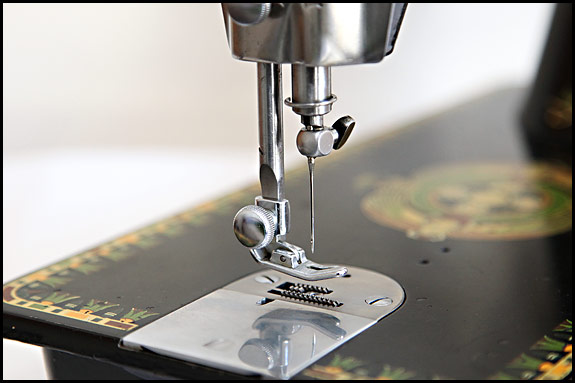

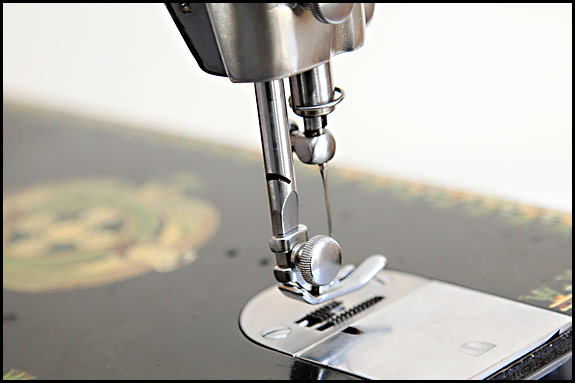
Hurrah! Another one back into use 🙂
Hello, not related to this post I am afraid but just wanted to say that having just been given grandma’s 1939 99K (that grandma purchased secondhand in 1948 from the Canterbury Singer shop) earlier this week I have found your blog to be a goldmine of information over the last couple of days and now have a working sewing machine, that has been well used within the family from my mother making bridesmaid dresses, grandad – car seat covers, grandma – curtains and now my wife a pin cushion this evening. Happy days and thank you.
OOps my bad, The Singer 66-1 through 3 were all back fasteners. I keep forgetting (I be old). Side fasteners began with the 66-4 and up machines.
Not only the early 66’s are back screwed but the only one is the 66-1. The first! All others 66-2 and up are side screwed foot clamping machines. I bet the inventor of the 66-1 was laid off due to his back idea!